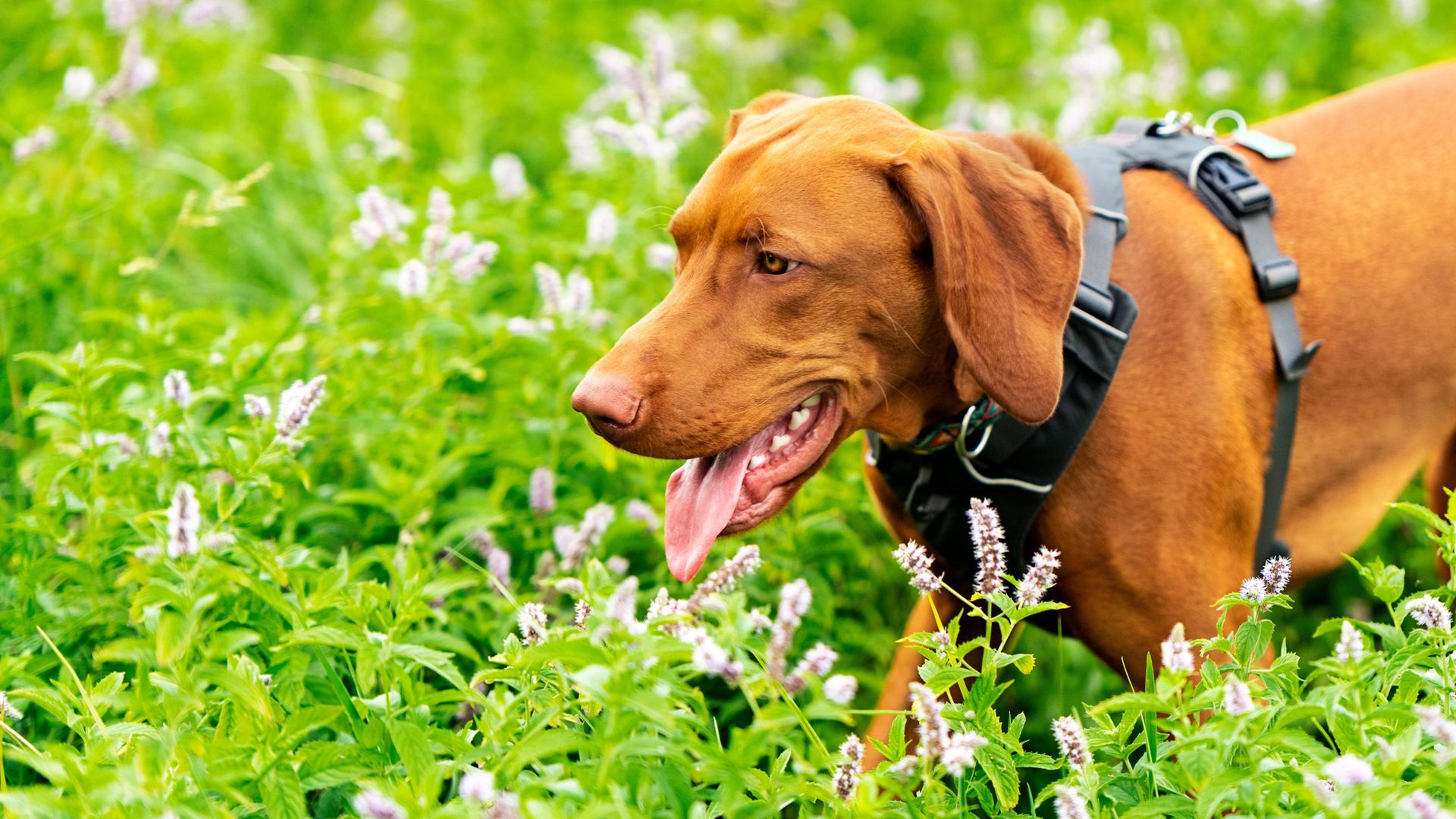The use of harnesses is becoming increasingly common in the gundog world, but what impact are these having on our dogs’ development and movement, asks Lez Graham
There is a growing trend in the dog training industry that is starting to infiltrate the gundog training world and that is the use of the harness as part of our daily dog walks. Just looking at the number of different types of harnesses available at places like Pets at Home shows just how quickly this trend is growing.
Harnesses have been a part of the pet dog training world for many years, and as ‘positive-only’ training increases, so too does the recommended use of the harness. Rather than putting the focus on training a dog to walk nicely on a regular collar and lead, or on a slip lead, different types of equipment are being recommended instead: harnesses, head collars, and sometimes a combination of the two.
The gundog forums on social media are full of folk asking how to train a dog to walk on a loose lead and if a harness should be used over a slip or collar and lead. Many dog trainers now insist that dogs attending classes, especially puppies, are walked on a harness.
 credit: ABO PHOTOGRAPRY S.R.O./Getty Images
credit: ABO PHOTOGRAPRY S.R.O./Getty Images
Should I use a harness on my dog?
So, should harnesses be the go-to piece of equipment for walking our dogs? The harness was originally designed for horses to pull loads, be that carts, logs, carriages or guns, and were either a chest strap or a collar design so that the horse could really put its shoulder forward into the equipment for maximum pulling power.
The chest harness design was tweaked for the dog way, way back, at least 3,000 years ago, as part of the armour that the war dogs wore in battle or in the games arena, not only providing protection but giving the handler something to hold on to whilst holding the dog back. The chest harness was, and still is, used to hitch dogs up to carts for pulling loads.
The design was adapted for the sled dogs, changing the load point to get optimum pull at speed and this harness continues to be tweaked for the ever-popular sport
of canicross.
The modern dog walking harness, for the most part, comes in two designs: the Y harness and the chest strap harness, to which some have the lead attached on the back, and some on the front at the centre of the chest, or slightly off to one side.
Are dog harnesses safe to use?
The chest strap harness is classed as a restrictive harness as it is thought to be
restrictive on the dog’s movement of the front legs. The Y harness is classed as a non-restrictive harness as it doesn’t drop down onto the humerus bone, thereby not restricting the action of the dog.
However, a study carried out in 2017 on five different agility dog harnesses using eight border collies, found that both the restrictive and the non-restrictive harnesses impeded the
dog’s movement.
In 2018, a different study was carried out using the restrictive and the non-restrictive harness on nine different breeds, which concluded that whilst both harnesses restrict the dog’s movement, the non-restrictive harness impacted the shoulder action and impeded overall movement by 11°, which was 4° more than the restrictive harness; both tests had two 2.5kg weights added to recreate slight pulling on the lead.
I’ve looked at many different types of harnesses as part of my research and as yet haven’t come across one that doesn’t impact the dog, whether that is the stride length, the shoulder action or being detrimental to the proprioceptive system by cutting across the belly of the triceps. And this is all without the lead being attached and pressure being put on the harness as a result of a dog pulling.
Every piece of dog training equipment, if used incorrectly, will have a negative impact on our dogs. The harness, however, appears to have a detrimental impact to gait and movement with no lead attached and looking from that perspective we need to ask ourselves whether these are the best things to be walking our puppies and developing young dogs on?
Perhaps we would do better sticking with a slip or a simple collar and lead for our gundogs and other breeds, and leave the harnesses for those sports that require them.